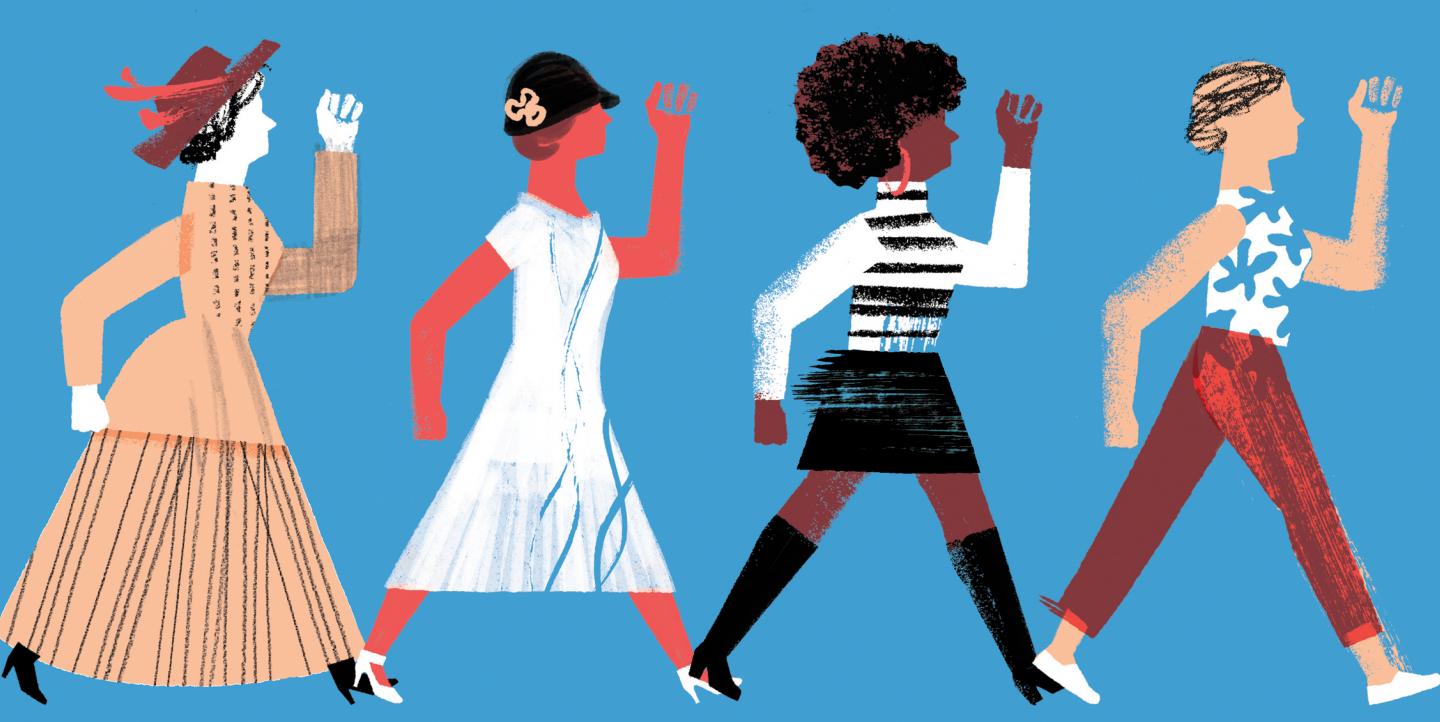Portuguese illustrator Marta Monteiro has a CV full of prestigious clients, among them, The New York Times, The Washington Post and Vogue. Though she lives in Portugal, Monteiro is often commissioned to draw illustrations to accompany global news stories, often dispatches from places she herself has never been.
We spoke with Monteiro via email about the challenges of illustrating international news and how the medium of drawing can offer readers a richer understanding of what’s happening in the world.
IJNet: Your high-profile U.S. clients include The New York Times and The Washington Post. How did your relationship with each of these publications start?
Monteiro: I started working with The New York Times because a Portuguese illustrator, André da Loba, who has been working for this newspaper for a long time now, shared some of my work on his Facebook page. Matthew Dorfman, who is an illustrator and [op-ed page] art director for The New York Times, saw it and I received an email for my first assignment. With The Washington Post, I think it [the initial commission] was because I won a Society of Illustrators gold medal in 2013, but I never asked why.
IJNet: As an illustrator, are you ever pitching or querying? Do you ever contact an editor to introduce yourself and send pieces for their consideration?
Monteiro: I used to [pitch] at the beginning [of my career,] but it can be very time-consuming and most [of the] time, I didn't receive a reply. I found that competitions are a better way of getting art directors’ attention. But when I have time I look for magazines or publishing houses where my work might be a good fit and send a letter, along with samples of my work.
IJNet: Because you are illustrating the news for these clients, places play an important role in your art. What do you do to learn about a place and its people in order to plan and finish an illustration?
Monteiro: I usually have one day (8 to 10 hours) and when I'm lucky, two days, to come up with the ideas and deliver the illustration. It's really stressful sometimes because I have to illustrate situations with which I'm not familiar, places where I've never been, or countries that I know so little about. I always have to rely on the piece (usually an opinion article) and my limited experience to come up with the best idea possible.
For example, on this last assignment about the relationship between Puerto Rico and the U.S., I was at first influenced by what was being described in the text [about the island’s financial crisis] and its similarity with the Greek crisis in Europe. In fact, there was a German minister who made a poor joke about it, saying that he wouldn't mind swapping Greece with the U.S. and then receiving Puerto Rico in return.
One visual element that is also a narrative element that I began working with was [the idea of] a gap. I felt that there was a huge gap between the two countries, as in Europe, that it was creating a crisis and increasing poverty.
IJNet: Do illustrators go through editing processes? Writers, for example, are almost always edited. Do art directors tend to accept illustrators' pieces as they are submitted or do they often request changes?
Monteiro: Yes, editing can happen anywhere along the process. Sometimes the client or art director has an idea that they want me to turn into an illustration or [they] give me a few rules to begin with. I remember having to do an illustration for a piece about Pope Francis and [I] couldn't use his portrait so the art director advised me to use symbols instead. For me, this is also a form of editing because it interferes with the way I work. Illustration is not only about being able to draw; you also need to interpret texts and communicate using images.
[Editing can also] happen when I send the sketches, but is less likely to happen with the final illustration, because all the efforts I put into communicating and doing the sketches tend to minimize any editing of the final work.
IJNet: What can illustration add to a news article that a photograph might not?
Monteiro: I think photography is used when you need to portray a specific situation or show a certain person. If the intention is to have a realistic or distinctive view of the main subject, like a violent accident or an exotic animal that only exists in a certain country, photography can be very useful.
On the other hand, illustration has the ability to represent abstract concepts or things that are impossible to photograph or see. Also, it can incorporate maps, diagrams, and symbols-- these are the elements that make an illustrated image much easier to understand.
IJNet: Are there any resources about illustration and visual communication (whether books or websites or podcasts) that might be interesting and useful to readers? Alternatively, are there any illustration tools that journalists can use to illustrate the news themselves?
Monteiro: The Illustration Age has a series of podcasts and some classes that I consider to be very useful resources. They have interviews with art directors and illustrators, and advice for those who want to become an illustrator.
Main image: Illustration provided by Monteiro

